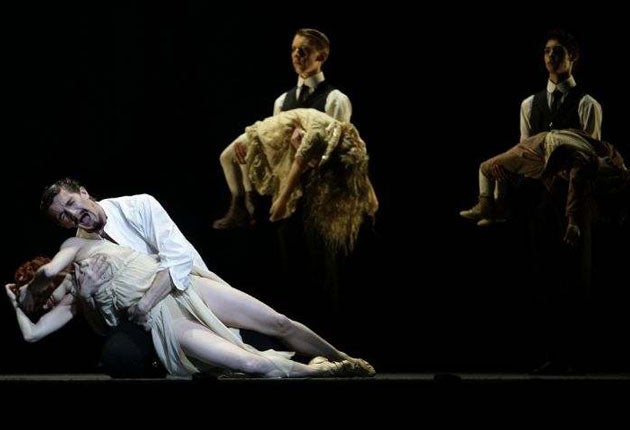Isadora / Dances at a Gathering, Royal Ballet, London
A loving attempt to revive a flop

The Royal Ballet's new Isadora is a lavish, loving attempt to rescue weak material. Kenneth MacMillan's original 1981 ballet was a two-act account of modern dance pioneer Isadora Duncan. It received some of the worst reviews in the company's history, and hasn't been revived for two decades. Now Deborah MacMillan, the choreographer's widow, has revised the production as a single-act work.
In 1981, the ballet starred two Isadoras: one dancing, one speaking. In 2009, the acting Isadora has become a recorded voiceover, a fine performance from Nichola McAuliffe. Film sequences provide historical context for the dancer's action-packed life. Deborah MacMillan's new setting is a plain black box; Barry Kay's original costumes and props are stylish evocations of the period. Richard Rodney Bennett has reworked his original score to create a cinematic soundtrack. It's a fluent, confident framework for MacMillan's dances. Yet the ballet remains messy and underpowered, despite Tamara Rojo's bold performance. Isadora was a rebel, standing for freedom in dance and in life. So why does she spend so much time being lugged around by her lovers, legs splayed? MacMillan often focused on sexual duets, but this time his psychological insight is missing.
Isadora and the artist Edward Gordon Craig fight about their relationship and their art: his career and hers. On stage, that becomes Isadora skipping winsomely while Craig (Edward Watson) tries to get on with his serious drawing. In MacMillan's hands, Isadora's art looks trivial.
Unfortunately, that's true throughout the ballet. Her first number is promising. Rojo is fluent and ardent in the running, jumping steps, her feet beautifully stretched. But MacMillan runs out of invention, leaving her with naive skips and repeated confront-the-audience poses. The other dances are no better. Rojo and Ricardo Cervera have fun with a tango number, but it's a triumph of performance over thin steps.
MacMillan's boldest idea is Isadora's dance of grief for the death of her children. She and Paris Singer (Gary Avis) lurch and fall, getting up only to collapse again. Yet even this looks rushed. Isadora's own death is foolishly anti-climactic. Throughout, performances are committed and strong, but it's not enough to save this Isadora.
As a reward for sitting through Isadora, you get Jerome Robbins's gorgeous Dances at a Gathering. Making her debut, Yuhui Choe floated through the phrases of Chopin's music, sensitively played by pianist Philip Gammon. Some of the jokes are getting broad, but this is a ravishing work, danced with warmth. While Robbins gives the dancers brilliant virtuoso steps, he can also create a mood with sketched gestures. If you wonder how Isadora's apparently simple dances could be powerful and profound, this gives a better answer than her ballet biopic.
To 21 March (020-7304 4000)
Join our commenting forum
Join thought-provoking conversations, follow other Independent readers and see their replies
Comments